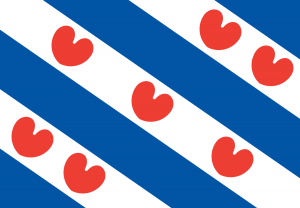Language/Western-frisian/Grammar/Basic-Sentence-Structure
Learning a new language can be challenging, but mastering the basics is key to building a strong foundation for future progress. In this lesson, we will introduce you to the basic sentence structure of Western Frisian. You will learn about word order and the use of subject, verb, and object, as well as some interesting cultural information and fun facts about the language along the way.
Word Order
Western Frisian is a subject-verb-object (SVO) language, which means that the subject comes first, followed by the verb, and then the object. Here is an example:
| Western Frisian | Pronunciation | English |
|---|---|---|
| Ik | [ɪk] | I |
| hâld | [hɔld] | like |
| fan | [fan] | of |
| kofje | [kɔfjə] | coffee |
Translation: I like coffee.
In this example, "Ik" (I) is the subject, "hâld" (like) is the verb, and "fan kofje" (of coffee) is the object. Notice that the verb stays in its base form and does not change according to the subject like in other languages, such as English.
Here is another example:
| Western Frisian | Pronunciation | English |
|---|---|---|
| Wy | [wɛi] | We |
| ite | [itə] | eat |
| Fryske | [frɪskə] | Frisian |
| molke | [mɔlkə] | milk |
Translation: We eat Frisian milk.
In this example, "Wy" (We) is the subject, "ite" (eat) is the verb, and "Fryske molke" (Frisian milk) is the object.
The Use of Subject, Verb, and Object
In Western Frisian, the subject, verb, and object are essential parts of a sentence, and each has a specific function.
The subject is the person, animal, thing, or idea that performs the action in the sentence. For example:
- De hûn rint. (The dog runs.)
- Ik sjoch dy. (I see you.)
The verb is the action or state of being that tells us what the subject is doing or what is happening. For example:
- Sy sjongt. (She sings.)
- De beam stiet. (The tree stands.)
The object is the person or thing that receives the action of the verb. For example:
- Ik lês in boek. (I read a book.)
- Hy keapet in auto. (He buys a car.)
It is important to note that not all sentences in Western Frisian require an object. Intransitive verbs, which do not require a direct object, are common in the language. For example:
- De blommen bloeie. (The flowers bloom.)
- Hy swevet yn 'e see. (He floats in the sea.)
Negation
Negating a sentence in Western Frisian is relatively simple. To create a negative sentence, the word "net" is added before the verb. For example:
| Western Frisian | Pronunciation | English |
|---|---|---|
| Ik | [ɪk] | I |
| bin | [bɪn] | am |
| net | [nɛt] | not |
| Frysk | [frɪsk] | Frisian |
Translation: I am not Frisian.
You can also use the word "net" to negate the object of a sentence. For example:
| Western Frisian | Pronunciation | English |
|---|---|---|
| Sy | [sɪ] | She |
| sjocht | [ʃɔxt] | sees |
| net | [nɛt] | not |
| my. | [mɛi] | me. |
Translation: She does not see me.
Some Fun Facts About Western Frisian
- Western Frisian is a minority language spoken in the Netherlands, mainly in the province of Friesland. It is also spoken on the islands of Texel, Vlieland, and Terschelling.
- Western Frisian has more than one million speakers worldwide, making it the second most widely spoken among the Frisian languages, after Saterland Frisian.
- The oldest known Western Frisian text is from the 16th century and is titled "Taesten wille Godts": meaning "May God be praised."
- Western Frisian is the only officially recognized minority language of the Netherlands.
- The Frisian flag, which features seven red and eight white stripes, is the oldest known flag of any European country or territory, dating back to the 13th century.
- Famous Western Frisian speakers include the actress and singer Nynke Laverman, the poet Obe Postma, and the politician Pieter Jelles Troelstra.
Exercise
Translate the following sentences from English to Western Frisian.
- I am happy.
- He drinks water.
- We like pizza.
- They play soccer.
- She reads a book.
Answers:
- Ik bin bliid.
- Hy drinkt wetter.
- Wy ha graach pizza.
- Sy spylje fuotbal.
- Sy lêst in boek.

